Risque
Le rapport « La situation mondiale des transferts monétaires » du CaLP Network indique que l’idée selon laquelle les transferts monétaires seraient plus risqués que d’autres formes d’aide est l’une des barrières principales à l’utilisation fréquente de cette modalité. Ces craintes sont liées à l’insistance de plus en plus franche des bailleurs concernant la lutte contre le terrorisme et contre le blanchiment d’argent, et à l’amenuisement des budgets destinés à l’assistance humanitaire. Le travail du CALP Network sur cette problématique vise à combattre les idées reçues, à faciliter la collaboration et à partager les apprentissages afin de veiller à ce que les transferts monétaires soient systématiquement considérés, tout comme d’autres modalités, en fonction des données probantes disponibles sur les risques réels de toutes les modalités.
Priorités actuelles
Plusieurs organisations travaillent actuellement sur les risques entraînés par les transferts monétaires. Le CALP Network cherche à identifier les synergies entre acteurs, à éviter les duplications et à définir des priorités communes sur lesquelles nous pourrions agir plus efficacement en groupe. Avec le PAM, le CALP Network co-dirige l’élément Risques, priorité du chantier du Grand Bargain sur les transferts monétaires.
Contenu présenté

Podcast: Will risk aversion hold us back from realizing the potential of CVA?
Podcast
Episode 1 of the CashCast, exploring how attitudes to risk have impacted the use of CVA in the Middle East and North Africa region.

Transferts monétaires et risques : ce qui se passe sur le terrain, reste sur le terrain (et pourquoi c’est un problème)
Blog Post
En octobre 2019, le CALP Network a facilité à Douala, au Cameroun, une réunion de partage d’expériences sur les risques liés à la protection des bénéficiaires dans les interventions monétaires. Cette réunion restreinte, organisée dans le cadre d’une série de rencontres dans différentes régions, a permis à 25 travailleurs humanitaires d’Afrique de l’Ouest et du Centre,...

Webinar: Data sharing in CVA: ethics, ownership and privacy
Event
Thematic lead
Contenu récent

Communications Technology and Humanitarian Delivery – Challenges and Opportunities for Security Risk Management
Report
The articles contained in this publication are dispatches from a new frontline in humanitarian action: the digital frontier. All are written by those observing, experiencing and attempting to respond to the challenges created by the digital revolution and the very real threats it is creating for...

Cash Transfers and HIV Prevention
Report
This paper proposes some initial principles on how to optimize HIV impacts of cash transfers, by encouraging targeting that: focuses on communities with high rates of new HIV infections, particularly acquired via sexual transmission; reduces local or community levels of economic inequalities between men...
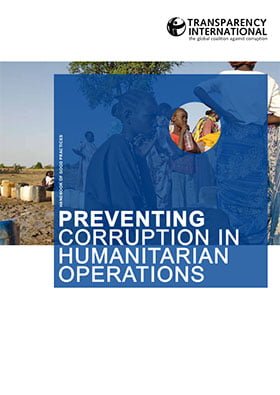
Preventing Corruption in Humanitarian operations
Guidelines and Tools
Transparency International (TI) has long held that the most damaging impact of corruption is the diversion of basic resources from poor people. Corruption in humanitarian aid is the most egregious form of this, as it deprives the most vulnerable poor people, the victims of natural disasters and civil...
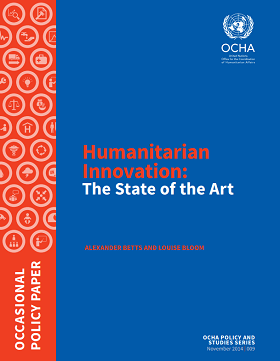
Humanitarian Innovation: The State of the Art
Policy paper
The humanitarian system faces grave challenges, as record numbers of people are displaced for longer periods by natural disasters and escalating conflicts. At the same time new technologies, partners, and concepts allow humanitarian actors to understand and address problems quickly and effectively....

Protéger la vie privée des bénéficiaires: Principes et normes operationnelles pour une utilisation securisee des donnees personnelles dans les programmes de transfert monetaire et electronique
Rapport
Les transferts électroniques sont porteurs de risques inhérents relatifs à la collecte et au traitement des données personnelles des bénéficiaires. Toutefois, à ce jour, ces risques sont largement méconnus et ils font l’objet de peu de solutions. Les pratiques des organisations sont rarement...

Cash Emergency Preparedness (CEP) Assessment: Myanmar
Policy paper
Cash transfer programming (CTP) in emergencies is not new in Myanmar, with the first examples going back at least to Cyclone Nargis in 2009. CTP has also been used in humanitarian settings such as Kachin State. However, CTP is not yet being widely used for the current conflict context in Rakhine State due...
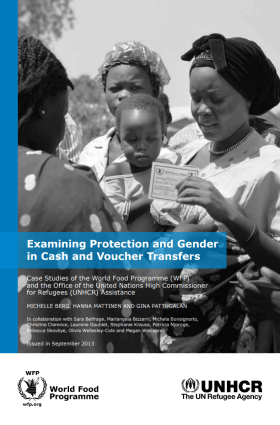
Examining Protection and Gender in Cash and Voucher Transfers
Case Study
With cash and voucher transfers increasing as a form of humanitarian assistance, the World Food Programme (WFP) and the UN Refugee Agency (UNHCR) teamed up to study the potential protection and gender impact of such transfers. While much research had been done about economic and market impacts of cash and...
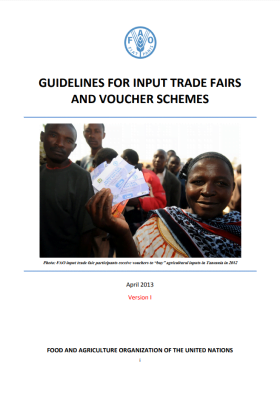
Guidelines for Input Trade Fairs and Voucher Schemes
Guidelines and Tools
One of the main causes of food insecurity for farmers in rural areas is limited access to agricultural inputs. The Food and Agriculture Organization of the United Nations (FAO) works to set up input trade fairs and voucher schemes to provide poor, vulnerable and food insecure farmers with access to the...

Guidelines for Public Works Programmes: Cash‐, Voucher‐ and Food-for‐Work
Guidelines and Tools
The Food and Agriculture Organization of the United Nations (FAO) manages public works programmes to provide transfers to vulnerable, food-insecure and/or crisis-affected households in return for the provision of labour (particularly through labour-intensive construction and...
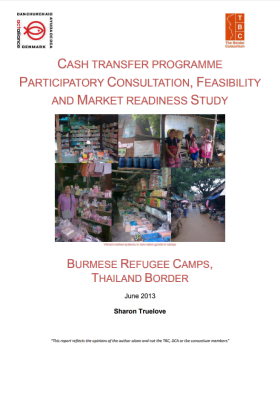
Cash Transfer Programme Participatory Consultation, Feasibility and Market Readiness Study: Burmese refugee camps, Thailand border
Report
This report is a participatory consultation, cash feasibility and market readiness study of the Burmese refugee camps on the Thailand border. It is a rapid, snap shot guide as to whether the conditions in two contrasting camps out of the full nine camps are conducive to a switch from the current ration...
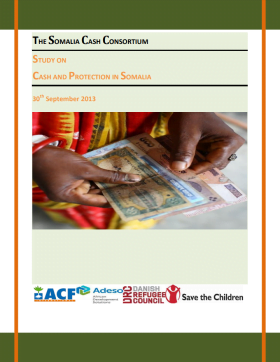
Study on Cash and Protection in Somalia
Report
The worst drought to hit Somalia in 60 years happened in 2011 and came to be popularly known as ‘The Horn of Africa Hunger Crisis’. The drought happened in a context of active conflict and a weak government that could neither protect its citizens nor the humanitarian actors. The Somalia Cash...

Markit Kit de suivi, analyse et intervention
Guides et outils
Une alliance relative à l’apprentissage sur l’approvisionnement local et régional “Local and Regional Procurement Learning Alliance (LRP LA)” formée en 2008 afin de soutenir la recherche sur le respect des délais, le cout/efficacité et l’impact sur le marché des projets “local and...

E-transfers in Emergencies: Implementation support guidelines
Guidelines and Tools
Electronic transfers, or e-transfers, are a form of value transfer that relies on digital payment systems. The great many benefits they can realise for aid recipients and aid agencies alike in terms of increased security, convenience, privacy, speed, reduced operational/transaction costs and logistics,...

NGO and Donor Consultations on Results-Based Protection
Presentation
InterAction carried out a series of two-hour consultations from November 2012 to March 2013. The consultation process explored aspects of results based protection by engaging agencies in a discussion on how they understand and measure protection. A total of 26 consultations took place that included...
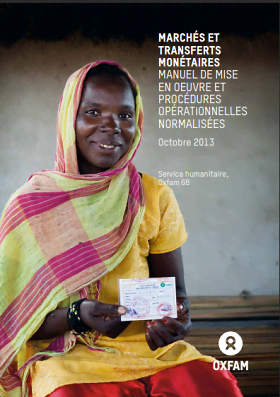
Marchés et transferts monétaires. Manuel de mise en oeuvre et procédures opérationnelles normalisées
Guides et outils
Au cours des dix dernières années et plus particulièrement depuis 2009, l’utilisation, par Oxfam, des transferts monétaires et des coupons comme outil d’intervention lors des urgences humanitaires a augmenté de façon significative. Si en 2009 les PTM ne représentaient que 2,5 % du...
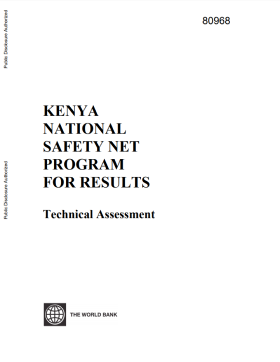
Technical Assessment of the Kenya National Safety Net Program for Results
Report
One of the priorities outlined in the National Social Protection Policy (NSPP) in Kenya, is the government’s ambition to enhance social assistance by developing the necessary institutions and strengthening operational systems while expanding the coverage of such programmes. To help realise this policy...
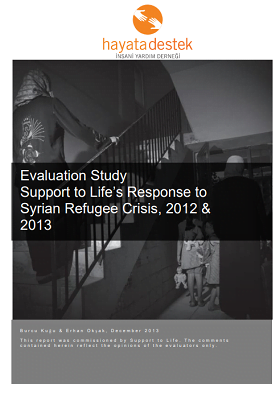
Evaluation Study Support to Life’s Response to Syrian Refugee Crisis, 2012 & 2013
Report
This report is part of enhancing Support to Life’s organisational learning on its Syrian Refugee Programme in Turkey. The specific objective of the evaluation is to present the findings on the achievements, quality and overall impact of Support to Life’s humanitarian response of the Syrian refugee...
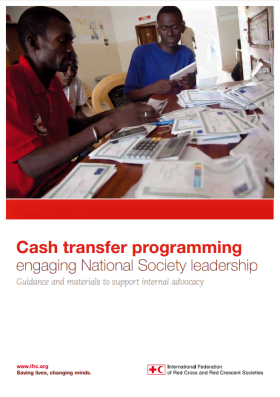
Cash Transfer Programming Engaging National Society Leadership: Guidance and materials to support internal advocacy
Guidelines and Tools
This guidance provides the materials required to run an awareness session for senior representatives of a National Society on the nature of cash transfer programming, its challenges and benefits. National Societies work in different contexts and as such the materials will need to be adapted to suit the...
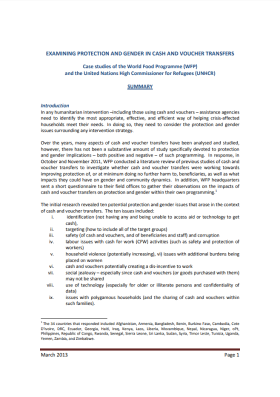
Examining Protection and Gender in Cash and Voucher Transfers – Summary
Report
In any humanitarian intervention – including those using cash and vouchers – assistance agencies need to identify the most appropriate, effective, and efficient way of helping crisis-affected households meet their needs. In doing so, they need to consider the protection and gender issues surrounding...
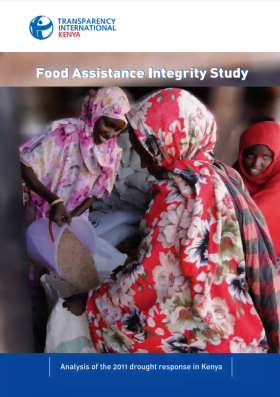
Food Analysis Integrity Study: Review of the 2011 drought response in Kenya
Report
Using four case studies from the 2011 drought response in Kenya, the Food Assistance Integrity Study by Transparency International Kenya analyses the impact of diversion and corruption on different types of food assistance. The study aims to enhance the accountability, efficiency and cost effectiveness of...
